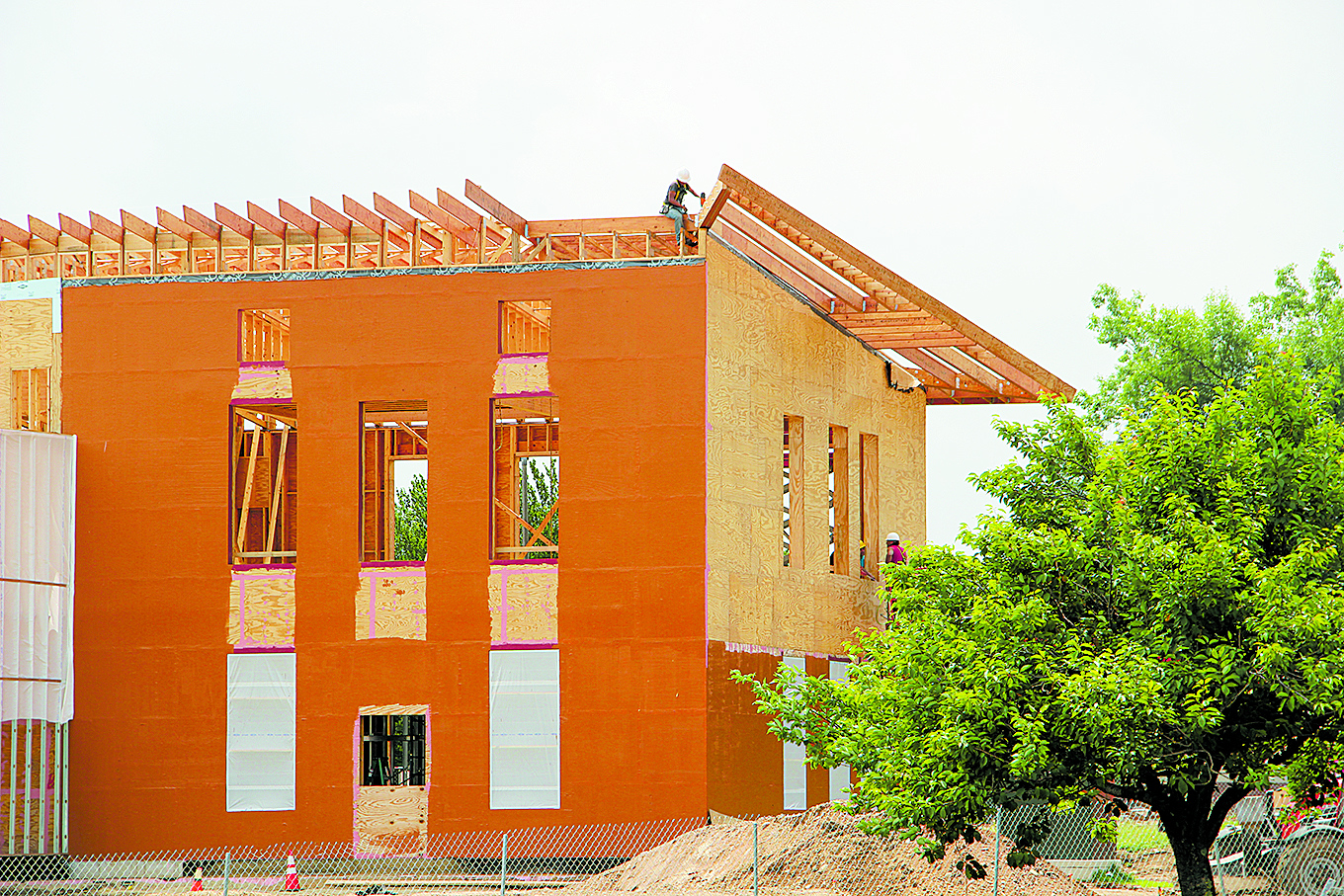A Living Building Challenge

Artist’s rendering of the Kern Center. Images courtesy of Wright Builders.
By George Harvey
Many of us might be unaware of the Living Building Challenge (LBC). It is an international building certification program that was developed in the United States and Canada by the non-profit International Living Future Institute in 2006.
Very likely the toughest green building standard, the LBC considers just about every aspect of a building’s existence. It requires documentation on everything from where materials came from to how a building performs over time. Issues considered include efficiency, energy, and the environment, but there are other concerns ranging from aesthetics to ethics.
Net-zero energy use should not be a new idea for regular readers of Green Energy Times. We are not all used to considering some other things the LBC holds important, however, and net-zero water use is just one example. Also, in the LBC standard, everything in the building must be safe, from ingredients in paints and carpets to potential biological problems. Over a dozen types of chemicals are not permitted, including not only asbestos and lead, but polyvinyl chloride (as in plastic plumbing pipes). Everything used in a building has to be sourced as locally as possible. Everything has to be documented, right down to nails and glue. Also, it is not just the building that is taken into account, but the land it stands on.
Clearly, such a standard is not achieved by accident. It should hardly be surprising that only about ten buildings in the United States that have been certified so far.
What is really surprising is that a single Massachusetts company is undertaking construction of two buildings with the intention of getting LBC certification, and both buildings are on the campus of Hampshire College, in Amherst, Massachusetts. This company is Wright Builders, in Northampton, Massachusetts. It is currently building the R. W. Kern Center, which will house the admissions and financial aid offices of the college, and the Hitchcock Center for the Environment, an educational facility that will also be located on the college’s grounds. We do not have room here to deal with both projects as well as we would like, and so we will cover the Hitchcock Center in the October issue.

Artist’s rendering of lobby.
Carl Weber, Associate Director of Buildings and Grounds for Hampshire College, is one of people at the college who is knowledgeable about the LBC. A conversation with him opened with his pointing out all the challenges in the process, and saying the surprising words, “Getting to net-zero energy is the easy part.” We are at least intellectually prepared for the idea of net-zero energy. Net zero water is a bit more difficult to imagine. For those interested, we suggest going to , and looking at page 14.
The center’s roof will do double duty. When it is sunny, solar panels will provide electricity. When it rains, the roof will collect water for storage in cisterns. From there, it is put through a series of filters, and passed to interior systems for drinking and cleaning. Cleaning water passes to a gray-water system, starting with filtration in indoor planters. From those, it can go back into the interior gray-water system or to a constructed wetland system and leaching field. Building condensates go to a system of rain gardens and swales.
Composting toilets keep human waste out of the water stream. The only town water coming in is town water for the fire-sprinkler system.. Aside from that, water only comes to the property from the sky, and only leaves in the ground or through evaporation. There are a number of reasons why this is beneficial, one being that it retains water that could otherwise run off and contribute to flooding elsewhere.
Weber says one of the biggest challenges was getting lists of ingredients in proprietary products, such as paints, carpets, and curtains. Companies are very reluctant to provide recipes, but some, as they realize there is a valuable market for products guaranteed to be absolutely safe, can be moved to provide information.
He also points out that Wright Builders has been building a lot of expertise in the LBC standards because it has been simultaneously sourcing products for, and building, the Kern Center and the nearby Hitchcock Center.

Kern Center under construction.
Jonathan Wright, CEO of Wright Builders, addressed this, saying “LBC calls the question on where you get everything.” To be certified, it is necessary to be able to provide a history of every product used at the site, including a source and the chain of custody. “You have to be well prepared for this,” he added. “It pushes the design team to use fewer materials.”
“Size matters,” Wright also points out. And that was a great benefit for all concerned when two buildings came to be built within a short distance of one another. Purchasing more materials makes it easy to get them economically. A full delivery truck uses not much more fuel than one that is half full. But also, the time and energy spent finding a good material source is as much a matter of economy of scale as purchasing power and economical shipping.
We will continue with more on Wright Builders in an article on the Hitchcock Center for the Environment.






Leave a Reply